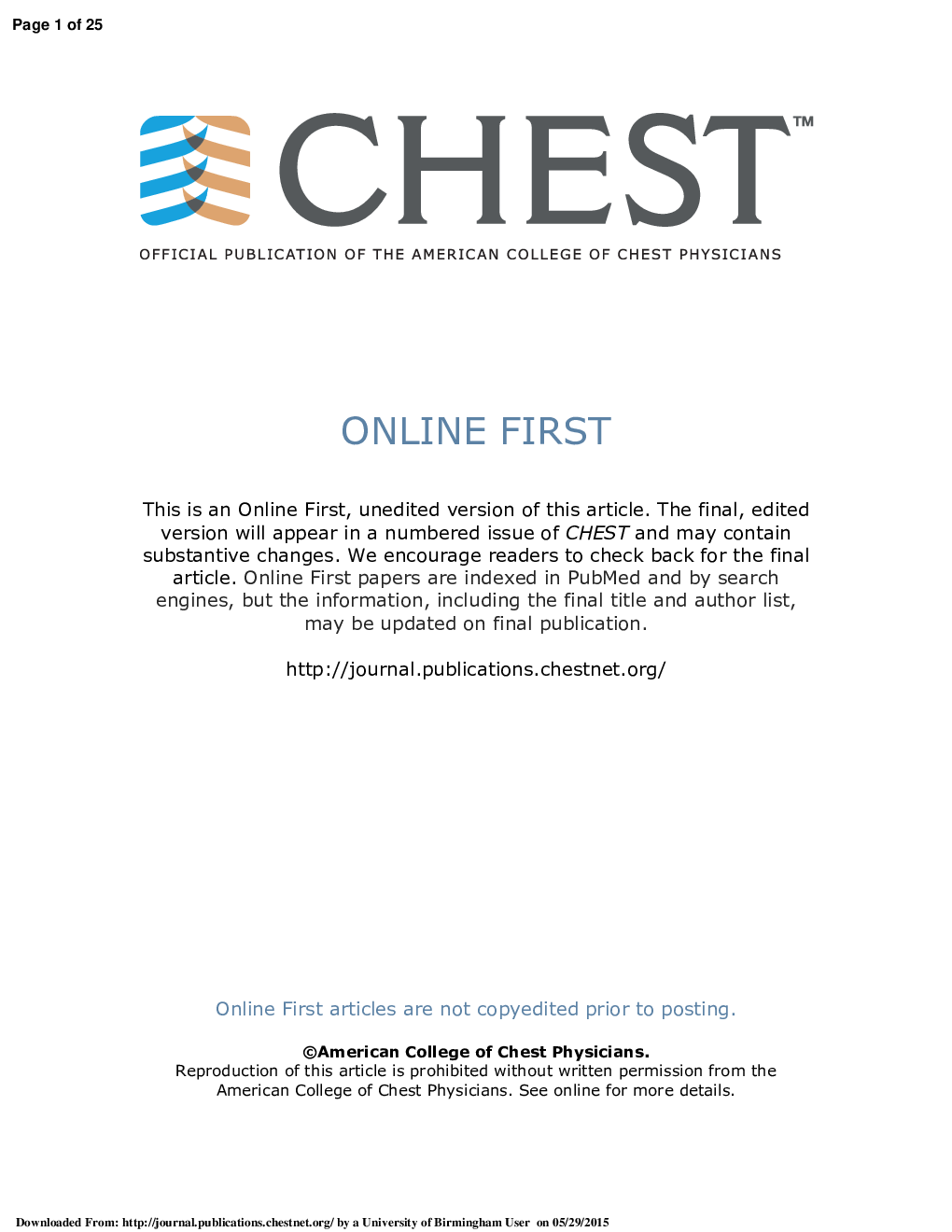| Article ID | Journal | Published Year | Pages | File Type |
|---|---|---|---|---|
| 5953732 | Chest | 2015 | 25 Pages |
Abstract
Sleep-disordered breathing (SDB) has a high prevalence in sarcoidosis. This high prevalence may be the result of increased upper airways resistance from sarcoidosis of the upper respiratory tract, corticosteroid-induced obesity, or parenchymal lung involvement from sarcoidosis. OSA is a form of SDB that is particularly common in patients with sarcoidosis. Sarcoidosis and SDB share many similar symptoms and clinical findings, including fatigue, gas exchange abnormalities, and pulmonary hypertension (PH). Sarcoidosis-associated fatigue is a common entity for which stimulants may be beneficial. Sarcoidosis-associated fatigue is a diagnosis of exclusion that requires an evaluation for the possibility of OSA. Hypercapnia is unusual in a patient with sarcoidosis without severe pulmonary dysfunction and, in this situation, should prompt evaluation for alternative causes of hypercapnia, such as SDB. PH is usually mild when associated with OSA, whereas the severity of sarcoidosis-associated PH is related to the severity of sarcoidosis. PH caused by OSA usually responds to CPAP, whereas sarcoidosis-associated PH commonly requires the use of vasodilators. Management of OSA in sarcoidosis is problematic because corticosteroid treatment of sarcoidosis may worsen OSA. Aggressive efforts should be made to place the patient on the lowest effective dose of corticosteroids, which involves early consideration of corticosteroid-sparing agents. Because of the significant morbidity associated with SDB, early recognition and treatment of SDB in patients with sarcoidosis may improve their overall quality of life.
Keywords
Related Topics
Health Sciences
Medicine and Dentistry
Cardiology and Cardiovascular Medicine
Authors
Chitra MD, FCCP, Boris I. MD, FCCP, Marc A. MD, FCCP,
